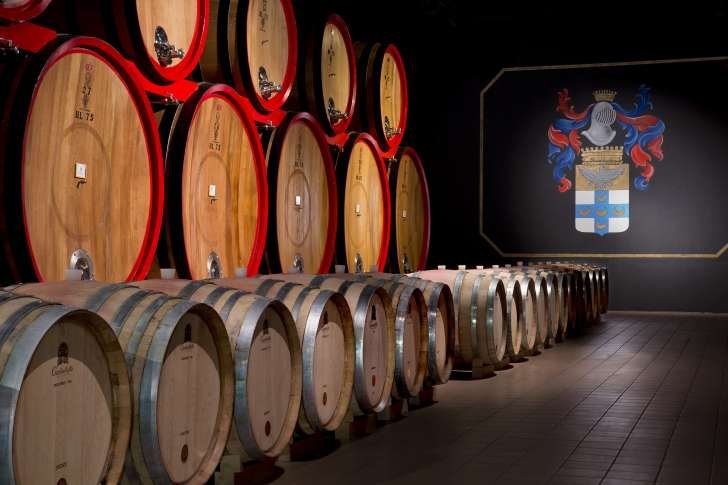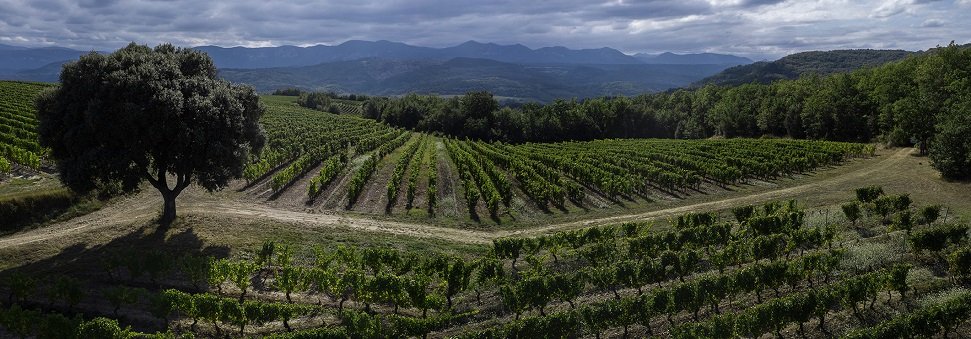There are countless Brunello lovers around the planet who gobble up the Ciacci Piccolomini allocations each year and drink every bottle with zero knowledge of the story behind it. But if you can spare us two minutes of your time today, it's definitely one of the more incredible tales in our industry.
In the early 1900s, Elda Ciacci married Count Alberto Piccolomini d'Aragona, a direct descendent of Pope Pious II, and lived in a palace where the Ciacci estate sits today. A farmer named Giuseppe Bianchini was in charge of managing the vines, olive trees, and the rest of the 220 acre property, and he worked tirelessly on behalf of the Count until he passed, then on behalf of the Countess until her death in 1985.
Knowing her passing meant the end of an era, and of his employment at the estate, Giuseppe began to prepare for life after Ciacci until something incredible happened—the kind of miracle that only happens in Hollywood movies and fairy tales: it was discovered the Countess had willed the entire Ciacci estate, including all of the vines, trees, and buildings, to Giuseppe as a gift!
The final words of her will read: ‘I am sure that by doing this my name will be famous all over the world, because Giuseppe knows exactly what I want and he has the philosophy to produce a great quality winery."
And that is exactly what happened! Today Ciacci Brunello is revered globally as one of the finest producers of wine in all of Tuscany, and it's still run by Giuseppe’s family. With fantastic press and glowing accolades year after year, there's a reason this stuff is allocated. I buy a case of the Brunello sight unseen every vintage because while there are other great Sangioveses out there, few have the depth and elegance of these. The story of Ciacci is incredible enough. Wait until you try the wines.
2017 Ciacci Piccolomini d'Aragona Brunello di Montalcino Riserva $59.99
93 POINTS: JAMES SUCKLING - Aromas of cedar, berry, mushroom and burnt orange follow through to a full body with medium, chewy tannins and a fluid, flavorful finish. Not overdone.
91 POINTS: VINOUS - A pretty and fruit-forward display of ripe cherries, minty herbs and sweet smoke wafts up from the 2017 Brunello di Montalcino. This impresses further with a juicy, fun mix of bright red berries and confectionary spices motivated by vibrant acidity. Hints of plum and licorice linger long over a slightly gruff coating of tannins, yet in the end, balance is nicely maintained. Well done.
2017 Ciacci Piccolomini d'Aragona Brunello di Montalcino Pianrosso $79.99
94 POINTS: JAMES SUCKLING - This is a beautifully crafted and polished Brunello for this vintage, with full body and creamy, lightly chewy tannins. Dark berries, walnuts and cedar with dried-flower undertones. Needs time to soften, but very pretty.
92 POINTS: VINOUS - A nuanced, delicate bouquet of dried strawberries, roses, hints of sweet spice and crushed rocks lifts up from the charming 2017 Brunello di Montalcino Pianrosso. This is remarkably lifted, yet juicy and energetic, as ripe red berries and minerals cascade across the palate. It leaves a coating of violet-tinged florals, along with persistent raspberry and cherry tones. The tannin management here is absolutely stunning, as the Pianrosso finishes structured yet vividly fresh.
-David Driscoll



















